
Frequent dizziness, tinnitus, flies in front of the eyes, heaviness in the back of the head are not only caused by fatigue. It is often caused by degenerative-dystrophic changes in the spine. A headache occurring in osteochondrosis of the cervical spine is a typical manifestation of the disease. It is impossible to get rid of them for a long time without affecting the root cause.
The mechanism of disease development
Degeneration of the intervertebral cartilage and bone tissue in the cervical spine already causes clinical symptoms in the early stages. The growth and displacement of the vertebral pieces inevitably leads to the deterioration of blood flow, denervation and malnutrition of brain structures.
The causes of cervical spine deformation are as follows:
- congenital abnormalities of the structure of bone tissue;
- osteochondrosis of the lumbar or thoracic region.
In almost half of the cases, the pathology is found in middle-aged and young people, more often in women. Its formation is facilitated by the long-term incorrect position of the head while sleeping, sitting at a desk, talking on the phone, or traveling in public transport. The progress of osteochondrosis is also accelerated by the habit of sleeping on high pillows. The mobility of this part of the body, the smaller size of the vertebrae compared to other classes, and the location of the large number of large blood vessels and nerve trunks cause the symptoms to appear early. Pain syndrome is the main one.
Fragments of collapsing discs and altered vertebrae compress the vertebral artery and the surrounding nerve plexus. Prolonged compression causes a narrowing of the lumen of blood vessels, slows down blood flow and reduces tissue oxygenation. Malnutrition, hypoxia and subsequent cerebral ischemia are aggravated by compression of nerve trunks by osteophytes - radiculopathy.
Symptoms of cervical osteochondrosis
In most cases, headache and other symptoms of pathology are secondary or vertebrogenic - they are caused not by pathological processes in the brain, but in the adjacent spine.
Reflex cephalgia - dull pain. It occurs when the first three vertebrae are affected. It starts in the upper part of the neck, spreads to the occipital and parietal parts, and then covers the temples and forehead. More often, it resembles a unilateral, classic migraine. It lasts from half an hour to several days, which is aggravated by tilting or turning the head, active physical activities.
If osteochondrosis affects the fourth and fifth vertebrae, cervicobrachialgia develops. Its danger lies in its resemblance to a heart attack. The pain is one-sided, sharp, burning, covers the neck, shoulder and occurs under the shoulder blade, in the hypochondrium, sometimes in the forearm and hand.
Myofascial dysfunction causes the so-called cervical migraine. Throbbing or pressing pain in the neck spreads on one side, covers the back of the head, the top of the head, the temples and reaches the upper arches.
In severe cases, additional symptoms may be observed: photophobia, eye redness, nausea, physical weakness.
Osteochondrosis of the cervical region can cause various types of vegetative-vascular dystonia:
- with frequent headaches;
- violation of thermoregulation, intracranial pressure, breathing;
- sudden mood swings.
In case of significant pinching of the spinal nerves, speech disorders, numbness of the tongue, and loss of sensitivity of the fingers occur. The person becomes like a drunk or under the influence of psychotropic drugs: he pronounces words vaguely, does not respond immediately when he speaks to himself. In advanced cases, tissue malnutrition and impaired blood supply lead to a permanent increase in intracranial pressure, vision and hearing loss.
Some facts about the disease:
- Osteochondrosis of the neck occurs about equally often in men and women.
- Most often, people aged 30-60 get sick.
- As a rule, the pathology occurs in people who have to constantly be in the same position at work and perform monotonous movements.
- The cervical spine has some structural features, due to which the disease can have many manifestations.
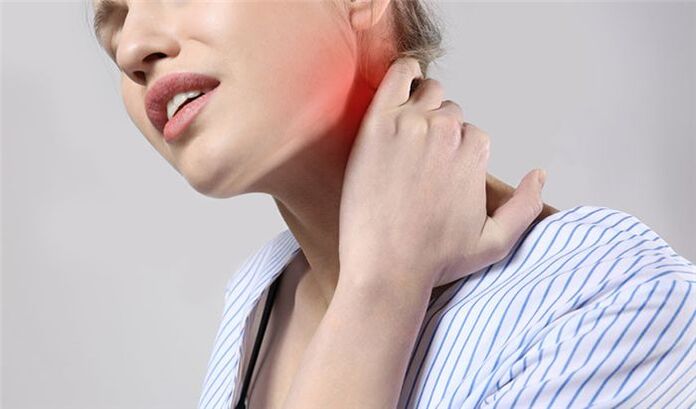
Which characteristics of the cervical spine cause the symptoms of osteochondrosis?
- There are openings in the lateral processes of the vertebrae - the carotid arteries, which supply the brain with blood, pass through them on the right and left sides.
- The initial part of the spinal cord passes through the neck region - it contains fibers that carry nerve impulses to all parts of the body, providing movement and sensitivity. When the spinal cord is compressed in the neck, neurological disorders occur throughout the body.
- This section of the spinal column has high mobility, and this predisposes to the occurrence of osteochondrosis (although in most cases the disease still develops in the lumbar region - it has not only great mobility, but also the greatest load).
- In the neck, nerve roots exit the intervertebral foramina and form the cervical and brachial plexuses. They are responsible for the movements of the muscles of the neck, arms and shoulder girdle, the sensitivity of the skin, and the regulation of autonomic functions.
- The first vertebra does not have a massive front - the body - this is a ring of bone that is placed on the tooth - a bony outgrowth on the second vertebra. This allows the head to turn from side to side.
Neck pain, headache, feeling of weakness, numbness in the hands are symptoms that should be referred to a neurologist. Examination by a specialist and examination with modern equipment will help to understand the causes of the pathology and take the most effective measures.
Stages and symptoms of cervical osteochondrosis
The first target of the disease is the intervertebral discs. Each disc consists of a nucleus pulposus enclosed in a dense annulus fibrosus. The nucleus performs a shock-absorbing function during loading of the spine, and the fibrous ring holds the nucleus pulposus inside the vertebral column.
In the case of poor blood circulation and nutrition, the tissues of the disc begin to break down. The fibrous ring loosens, the seed loses its moisture, becomes thinner and partially loses its shock-absorbing properties. As a result of such changes, the load-bearing capacity of the intervertebral disc decreases and is damaged.
One of the main symptoms of osteochondrosis of the cervical spine is shooting neck pain, burning, stabbing, similar to "electrical discharges". It usually affects one or both hands.
Some patients complain of aching or constant pain, along with pain, stiffness of movements, dizziness, headache and memory loss.

The nature and severity of the pain, as well as the accompanying symptoms, depend in many ways on the stage of osteochondrosis:
- 1 section.Changes occur within the intervertebral disc - the nucleus pulposus moves and begins to irritate the nerve endings. But pain in the initial stage usually occurs only during physical exertion, movement, coughing and sneezing, and at rest a person should not feel discomfort.
- 2-stage.The annulus fibrosus loses its ability to hold the nucleus pulposus, the distance between the vertebrae decreases and they shift relative to each other. As a result of such changes, pinching of nerve endings is possible, which causes severe pain. Pain, on the other hand, forces a person into a forced situation.
- 3 stages.The fibrous ring is destroyed, an intervertebral hernia occurs. In this stage, the cervical spine is often deformed - its natural curvature is reduced. A herniated disc compresses or irritates nerve roots, causing intense and constant pain in the neck and arms, often accompanied by numbness and muscle weakness.
- 4 stages.The fibrous ring becomes dense, adhesions form between the vertebrae. As a result, immobility occurs in the affected area, while the pain may even decrease.
Diagnostics
You should contact a neurologist with complaints about your poor health from osteochondrosis of the cervical spine. During the examination, the doctor determines the origin of the pain. To this end, it uses the following methods:
- with fingers, press the region of the cervical vertebrae in the places where the nerve roots protrude: the resulting pain reaction indicates cephalalgia;
- he presses the points near the bony protrusions under the lower edge of the ear: the subsequent pain attack clearly indicates the development of a cervical migraine due to mechanical compression.
For the accurate diagnosis of cervical osteochondrosis, a number of instrumental tests are prescribed. Radiography, magnetic resonance and computed tomography continue to lead the way. With their help, pathological changes in the structure of bones, cartilage and soft tissues become visible.
Treatment of cervical osteochondrosis
The drugs are designed to eliminate symptoms, restore normal blood circulation, and restore the biomechanics of the entire neck region.
NSAIDs, pain relievers, muscle relaxants, and anticonvulsants are used to relieve pain.
Vasodilators - vasodilators help reduce vegetative manifestations, improve venous outflow and prevent edema in the affected area.
Medicines containing vitamin B and magnesium improve the nutrition of nerve tissue cells and reduce harmful symptoms.
At the same time, patients are recommended medications that regulate blood pressure and improve heart rhythm.
Many patients are prescribed tranquilizers, antidepressants, tranquilizers.
Depending on the severity of the condition, the duration of treatment is short or long. Pain relievers are used once or for several days. Means for normalizing blood flow and vitamins - 2-3 month courses.
In order to maintain the effect of the drugs, physiotherapy is prescribed:
- massage of the collar zone;
- acupuncture and reflexology.
In case of exacerbations, the wearing of therapeutic bandages to support the neck muscles can be seen.
In the absence of exacerbation of osteochondrosis, therapeutic exercises help to stop and prevent the symptoms of VVD. Gymnastics helps to strengthen the muscles of the neck, relieves spasms, improves the flexibility of blood vessels and the ligamentous structure of the vertebral joints. The training includes movements for stretching the soft tissues: deep head tilts, turns, rotations.
Patients with osteochondrosis complicated by VVD should carefully arrange their sleeping place. You need to rest only on an orthopedic mattress and pillow, do not drink a lot of liquid at night to avoid swelling. Work and hobbies related to the unfavorable position of the cervical vertebrae should be avoided: leaning back or tilting the head low.
All materials presented on this site are for educational purposes only and are not intended for medical advice, diagnosis or treatment. The administration of the site, the editors and the authors of the articles are not responsible for the consequences and losses that may arise during the use of the materials on the site.
Vertigo with cervical osteochondrosis
Dizziness associated with cervical chondrosis is a common occurrence in both sexes, starting at the age of 30. The peculiarities of the lifestyle and some abuses lead to the development of osteochondrosis of the cervical spine in almost every second resident of our country. There are patients who already have problems in adolescence.
It is impossible to underestimate the danger of this pathology: it worsens a person's well-being, contributes to the development of dangerous conditions. Its symptoms are various unpleasant sensations.
Causes of dizziness in cervical osteochondrosis
In the article, we will examine whether it is possible to feel dizzy and sick for a long time in cervical osteochondrosis, why this happens, what makes the condition worse, and what needs to be done, how to get rid of the discomfort forever.
Due to a not very healthy lifestyle and regular overloading of the neck area, the condition of the spinal column in this zone gradually changes.
Degenerative changes develop in the intervertebral discs, the holes through which the spinal cord nerves and blood vessels that feed the brain gradually narrow.
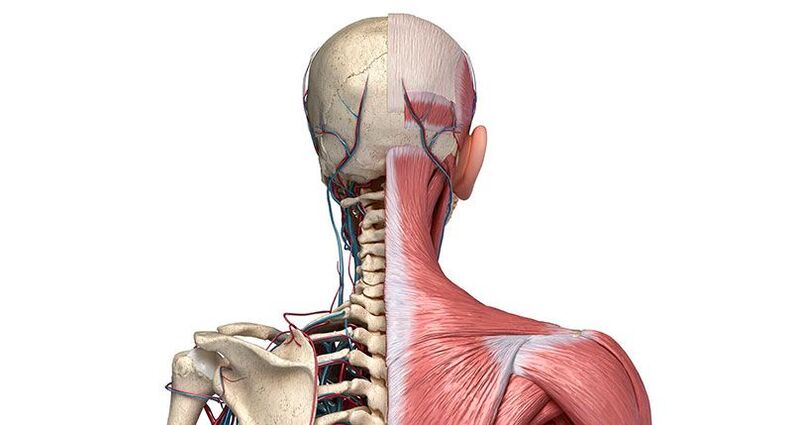
The condition is extremely unpleasant and dangerous. The patient feels pain in certain positions of the head and neck with sudden movements. The brain receives less oxygen than it needs, causing regular dizziness.
The main reasons why a person with osteochondrosis may feel dizzy:
- Vertebral artery compression by bone growths. Osteophytes pinch the cerebellum and the vessel that supplies the basal parts of the brain. Its permeability decreases, the amount of blood and oxygen passing through it decreases. In medicine, this phenomenon is called vertebral artery syndrome.
- Irritation of Frank's nerves. The nerve fibers of the sympathetic system envelop the vertebral artery, whatever effect they feel on it. In response to irritation, the nerve causes a spasm in the blood vessel, which impairs its patency. Hernias, developed osteophytes or instability of the cervical vertebrae can cause discomfort.
- Subluxation of the upper articular process of the underlying vertebra or disc herniation in the neck area.
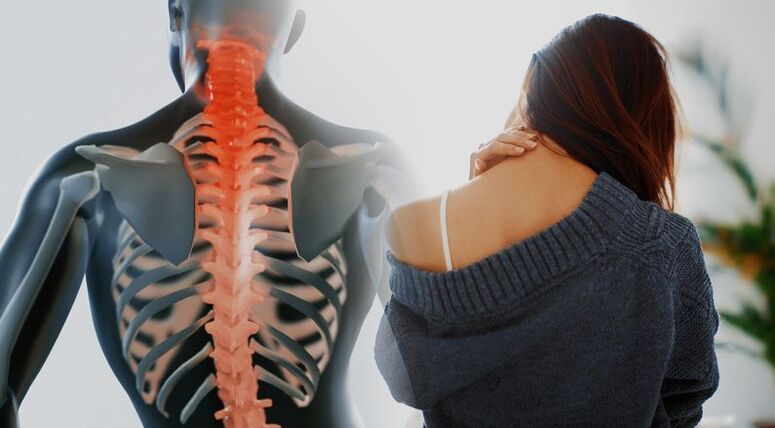
Dizziness and nausea due to osteochondrosis of the cervical spine, as well as other symptoms, such as weakness in women, require medication, but what to take, which pill will help, only the doctor can decide after the examination. thorough study of the patient's condition. After all, the causes of dizziness are very diverse.
Depending on the specific cause of the pathological condition and the development of negative symptoms, various tools and techniques are used.
You need to understand that dizziness, if the attacks intensify and become frequent, is a really dangerous condition. A person not only risks his life by driving or crossing the road, but also risks the development of brain disorders due to the regular lack of blood and nutrition of nerve cells.
Additional symptoms
Before deciding what helps with the appearance of vertigo in cervical osteochondrosis, what exercises stop unpleasant attacks, do not read the opinions of strangers, but evaluate the accompanying symptoms that occur during the development of the disease.
An experienced doctor recommends the degree of development of chondrosis according to such signs. It is also capable of assessing the dangerousness of the condition and compiling a diagnostic algorithm. And then - choosing an effective and safe treatment.
Symptoms that accompany a decrease in the patency of the carotid artery and indicate the need to urgently consult a doctor:
- Intermittent tinnitus, possibly pulsating. It then gradually spreads over the entire head. Usually, the attack occurs in an uncomfortable position, after physical exertion or against the background of severe fatigue.
- Cracking, pain when moving the neck.
- Darkening of the eyes, brief fainting when the head is thrown back. In advanced cases, even a sharp turn causes such a reaction.
- Nausea, up to vomiting, accompanied by bouts of dizziness.
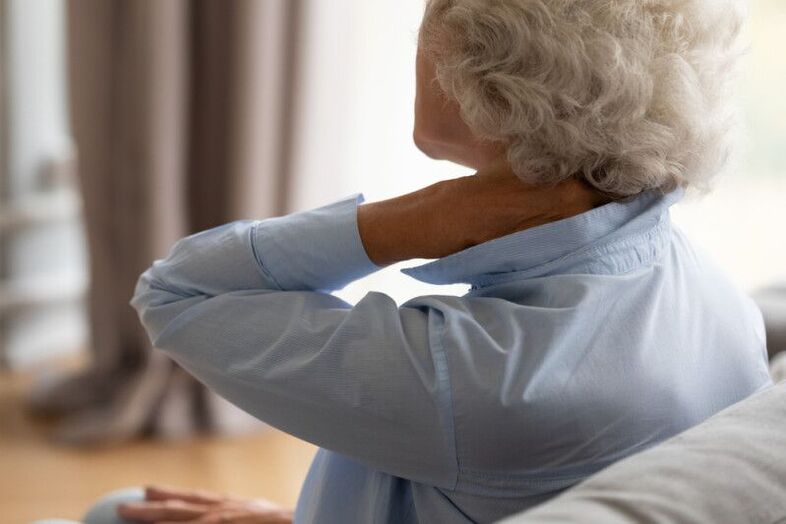
Maybe the head is spinning not because of cervical chondrosis, why it developed and what needs to be done, only a neurologist can tell you after the examination. The earlier the diagnosis and the start of treatment, the more effective the measures taken will be.
If you seek help early, there is a chance to avoid medication and get rid of the problem that has arisen. If you delay a trip to the doctor, you risk developing a more dangerous condition.
Diagnostics
How to treat osteochondrosis of the cervical spine with dizziness, what to do if a violation of coordination of movements has developed, and what is prescribed in such cases, you can figure out after a complete diagnosis, since each case is unique.
Before deciding on a therapeutic regimen, it is extremely important for the doctor to find out what influenced the development of the disease. It is necessary to clarify how quickly it deteriorates and what are the characteristics of its course. Due to these characteristics, a thorough diagnosis is made when treating complaints related to regular dizziness.
The neurologist performs an initial examination during which:

- determines the range of symptoms accompanying the course of the disease;
- according to the results of the physical examination, find the characteristics of changes in the neck region;
- collects anamnesis, anamnesis of the development of the disease;
- asks about the characteristics of the patient's life in order to identify risk factors influencing the development of the disease.
Instrumental tests are then carried out:
- MRI of the brain and neck to determine if changes have already appeared and to what extent;
- Ultrasound of the vessels passing through the neck shows how much the permeability of blood flow and nutrition of the brain is reduced;
- The CT scan of the cervical spine reveals deviations from the norm of bone structures;
- Electromyography enables the recording of the electrical activity of the muscles of the evaluated area;
The correct answer to the question of what to do if your head spins from your neck and hurts is to go to the doctor. The clinic precisely determines the causes of the bad condition and selects the appropriate therapy.
Treatment
After determining the specific stage of the disease, the doctor prescribes individual therapy. After all, you may encounter such a phenomenon as neuralgia of the occipital nerve, and you will have to deal with it in your own way.
They prefer complex treatment, which includes:
- taking medications (chondroprotectors, anti-inflammatory agents, etc. );
- physiotherapy techniques;
- various massage techniques;
- special physiotherapy exercises, gymnastics therapy;
- following a healthy diet.

If you feel dizzy in osteochondrosis of the neck region, treatment can be carried out with conservative methods and surgical intervention.
Surgeries are performed in situations where the spinal column is too narrow or a permanent hernia has developed.
Effective treatment methods in the early stages are massage and special exercises. Adherence to the doctor's recommendations in the preclinical stage of the development of the disease allows for a complete recovery.
The results show physiotherapy methods that allow you to get rid of painful symptoms in just a few sessions:
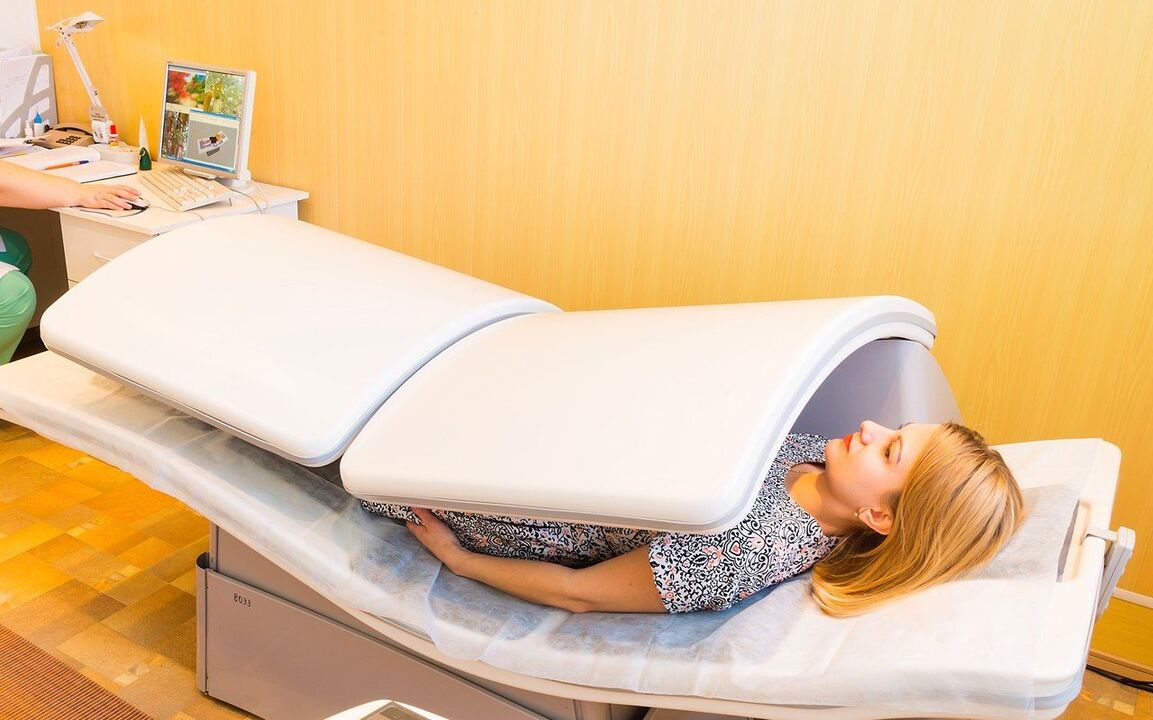
- classical manual therapy;
- shock wave methods of impact on the body;
- hydromassage;
- laser therapy.
Treatment of cervical osteochondrosis, when the head is already dizzy, is an urgent step.
This dangerous symptom indicates the development of really dangerous pathologies that can further worsen the comfort of human life. And you can even shorten its duration.
Prevention
Regular preventive measures can prevent the appearance of unpleasant symptoms or significantly reduce their severity. Many people wonder if it is effective to use funds without pain for dizziness caused by cervical osteochondrosis, how to get rid of it, quickly alleviate the attack, how to treat the condition at home?
Prevention through lifestyle
Here is a list of measures to prevent the progression of the disease:
- Reduced time spent in a bent position. For example, at a computer, a gadget, or a job that requires straining the neck and tilting the head forward. Provide an ergonomic workplace.
- Organization of a gentle regime of alternating work and rest.
- Rejection of habits, destructive addictions. It is necessary to reduce alcohol consumption and the number of cigarettes smoked.
- Designing a place to sleep. Get an orthopedic pillow and mattress that takes into account the structural characteristics of the spine.
- Increase the time spent on physical activity in your daily schedule, avoid physical inactivity.
- Regularly perform a special warm-up during the working day. Ideally, 5 minutes per hour should be allocated to exercise.
- Avoid traumatic activities, extreme sports and excessive physical exertion.
- Watch your weight. If obesity appears, try to lose excess weight as soon as possible.
- Regularly attend special massage courses and learn safe self-massage techniques.
- Use a comfortable backpack to carry things, avoid bags that cause you to slouch when you walk. Use a headrest while sitting while traveling.
- In case of injury, seek help immediately. Start following the doctor's recommendations from the first days.
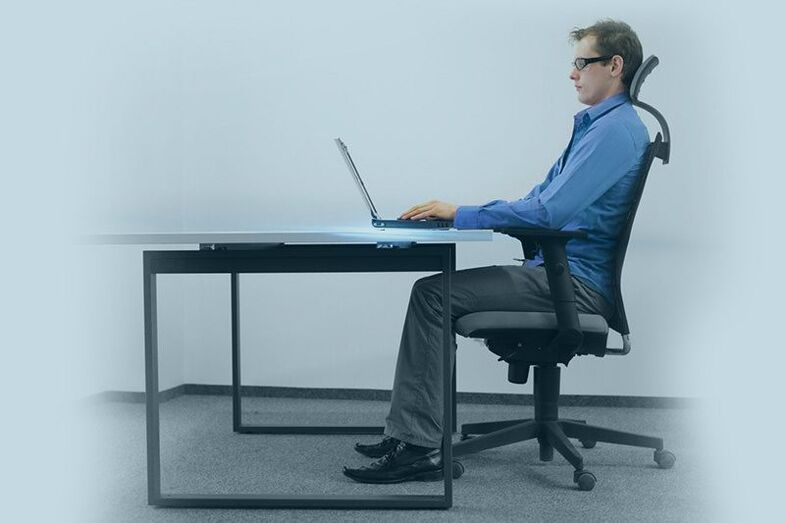

It is impossible to ignore situations when the neck and back of the head hurt against the background of preventive measures. This is the first symptom of the disease and requires treatment.
Performance protection
It is beneficial to follow a special diet that supports medically induced recovery processes in the neck and cervical spine.
The main principles of nutrition in the presence of such a problem or a tendency to it:
- the use of gelling foods in food, which contribute to the restoration of cartilage in the body;
- maintaining a balance of protein and carbohydrate foods, a sufficient amount of lean meat and fish in the diet;
- limiting the excessive consumption of salt and spices;
- reducing the consumption of pickled and smoked products;
- reducing the diet of sweets, including rich products;
- limiting caffeinated beverages;
- increasing the proportion of fresh vegetables and fruits in the daily menu;
- rejection of fatty and fried foods, fast foods.
Exercise therapy should occupy an important place in the life of a person suffering from a similar disease. They are especially important for the elderly or those with a sedentary lifestyle. At the same time, a special series of exercises must be repeated daily in order to achieve the expected result.
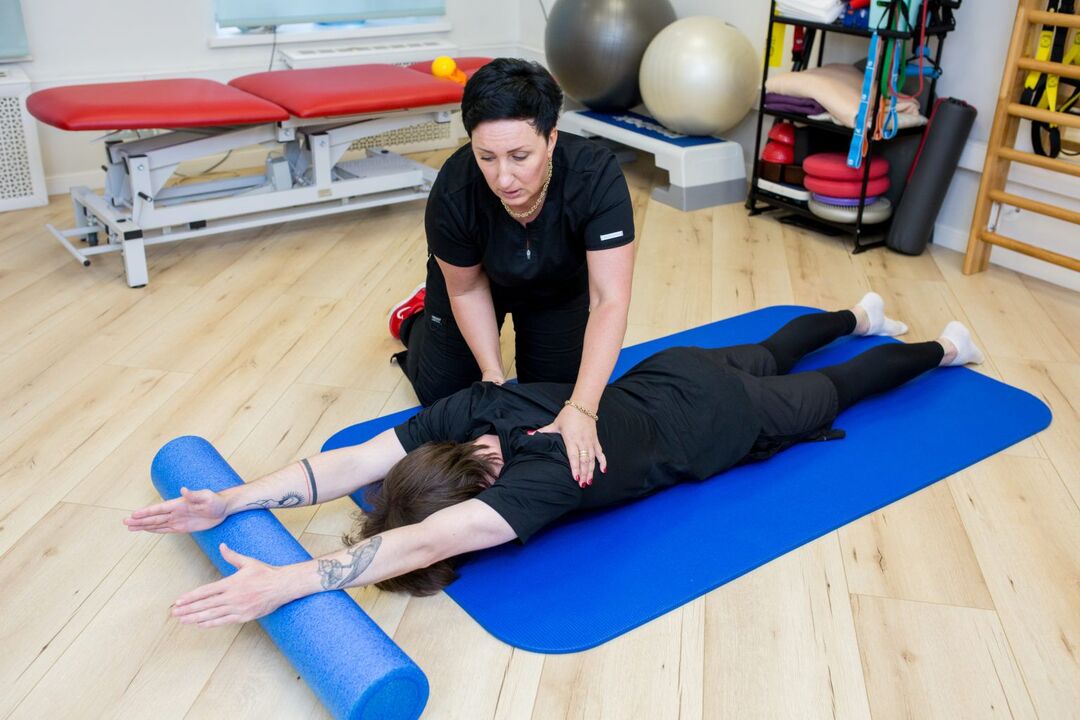
Despite the variety of traditional medicine, with dizziness due to cervical osteochondrosis, what to do, what to drink, how to cope with attacks, how to cure a deviation or eliminate a particular symptom, this or that remedy really helps, and how does it cause further harm, a qualified doctor must decide. An online consultation with a neurologist can help here.
Do not blindly follow the advice of friends and try to eliminate the disease without using the recommendations of a qualified doctor.
In advanced cases, osteochondrosis can not only reduce the quality of life, but also deprive a person of his ability to work. Therefore, try to notice in time the factors that can lead to the destruction of the intervertebral discs and, if possible, eliminate or reduce their harmful effects on the spine. If you are concerned about neck pain, be sure to see your doctor. Only a specialist can determine the stage of the disease, select pain relievers and prescribe physiotherapy exercises or physiotherapy.

























